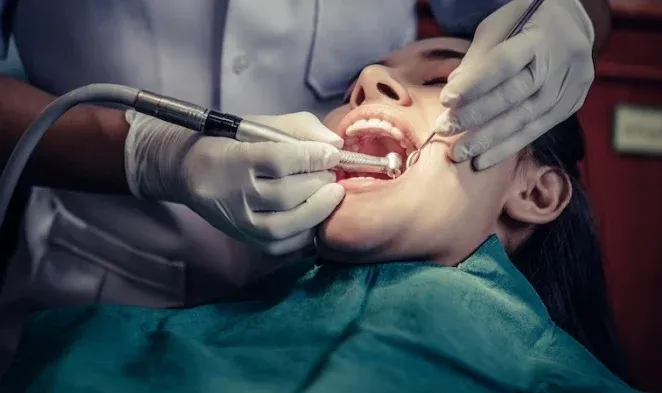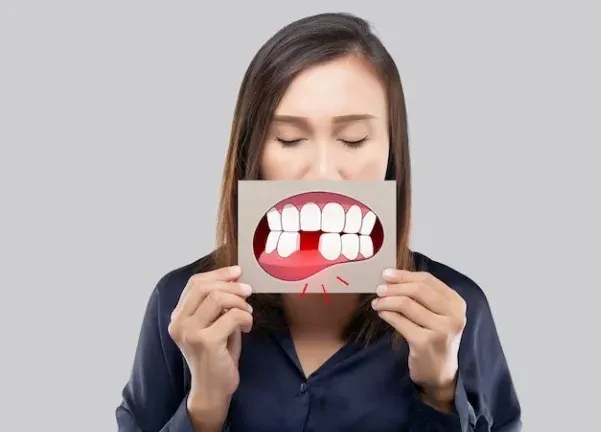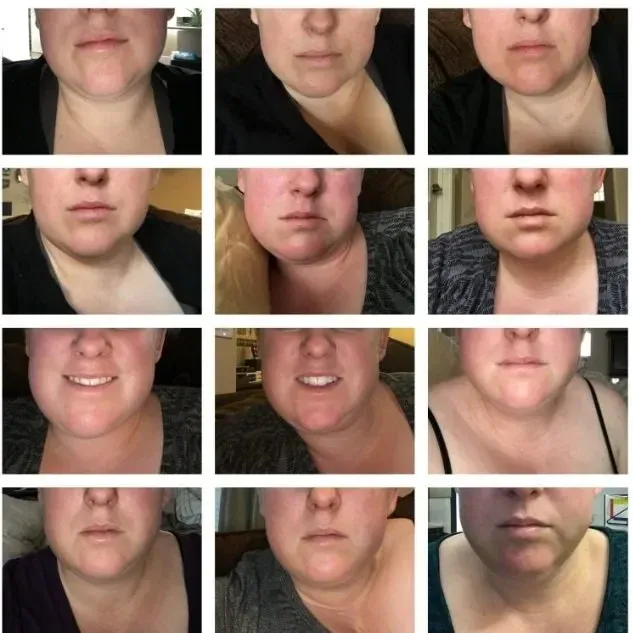Is Invisalign Cheaper Than Braces? Which Is More Valuable?
When it comes to achieving a straighter smile, you have several options, with Invisalign and traditional…
When it comes to achieving a straighter smile, you have several options, with Invisalign and traditional braces being among the most popular choices. One of the key factors people consider when deciding between these orthodontic treatments is cost.
In this in-depth article, we will explore the question: Is Invisalign cheaper than braces? We will delve into the factors that affect the cost of both treatments, provide tips on how to compare their costs, and discuss the effectiveness of Invisalign compared to traditional braces.
Is Invisalign Cheaper than Braces?
The cost of orthodontic treatment can vary widely depending on individual factors and specific treatment plans. However, in many cases, Invisalign tends to be more expensive than traditional braces. Here’s why:
- Materials and Technology: Invisalign aligners are custom-made from a patented thermoplastic material, and the treatment involves a series of aligners that are changed every few weeks. This technology and the specialized materials contribute to the higher cost of Invisalign.
- Labor and Expertise: Invisalign treatment often requires the expertise of an orthodontist who is trained in this specific method. The labor involved in designing a series of aligners tailored to your teeth and closely monitoring your progress can increase the overall cost.
- Duration of Treatment: Invisalign treatment is often shorter in duration compared to traditional braces, but the shorter treatment time does not necessarily translate to lower costs. The materials and technology used in Invisalign may offset the reduced treatment time.
- Maintenance and Replacements: Invisalign aligners are removable, which means they require diligent maintenance and care to ensure they remain effective. If aligners are lost or damaged, replacements can incur additional costs.
- Complexity of the Case: For some orthodontic issues, Invisalign may not be suitable or may require additional attachments or procedures, further increasing the cost.
- Insurance Coverage: Dental insurance policies vary widely in coverage for orthodontic treatments. Some may cover a portion of the cost, while others may not cover orthodontics at all. In either case, it’s essential to check your insurance policy for specifics.
What are the Factors that Affect the Cost of Invisalign and Braces?
To better understand the cost comparison between Invisalign and braces, let’s delve into the factors that influence the overall cost of both treatments:
Factors Affecting Invisalign Costs:
- Complexity of the Case: The severity of your orthodontic issues, such as overcrowding or misalignment, can impact the cost. More complex cases may require more aligners and, therefore, be more expensive.
- Treatment Duration: Shorter treatment periods generally incur lower costs. Invisalign is often quicker than traditional braces, but the length of treatment varies from person to person.
- Location: The cost of living and dental care in your area can affect the price of Invisalign treatment. Larger cities and regions with a higher cost of living may have higher treatment costs.
- Orthodontist’s Experience: The experience and reputation of the orthodontist providing the treatment can influence the cost. Highly experienced orthodontists may charge more for their expertise.
- Additional Procedures: Some cases may require additional procedures, such as tooth extractions or the placement of attachments to aid in tooth movement. These procedures can add to the overall cost.
Factors Affecting Braces Costs:
- Type of Braces: Traditional metal braces are typically less expensive than alternative options like ceramic or lingual braces.
- Treatment Duration: The longer you need to wear braces, the higher the overall cost. Complex cases may require a more extended treatment period.
- Location: As with Invisalign, the cost of braces can vary based on your geographical location and the cost of living in your area.
- Orthodontist’s Experience: The experience and reputation of the orthodontist can affect the price of braces. Specialized or renowned orthodontists may charge higher fees.
- Maintenance and Repairs: Braces may require periodic adjustments and maintenance appointments, which can incur additional costs.
- Materials Used: The type of braces you choose and the materials used (e.g., stainless steel, ceramic) can influence the cost.
How to Compare the Cost of Invisalign and Braces
When comparing the cost of Invisalign and traditional braces, it’s essential to consider your specific needs, preferences, and financial situation. Here’s a step-by-step guide on how to make an informed comparison:
- Consultation: Schedule consultations with both an Invisalign provider and an orthodontist who offers traditional braces. During these consultations, discuss your orthodontic needs and treatment options.
- Treatment Plans: Request detailed treatment plans from both providers. This should include the estimated duration of treatment, the number of appointments required, and a breakdown of costs.
- Insurance Coverage: Check your dental insurance policy to see if it covers orthodontic treatment and, if so, what percentage of the cost is covered.
- Payment Plans: Inquire about payment plans and financing options with both providers. Some offer flexible payment plans to make treatment more affordable.
- Consider Your Lifestyle: Consider your lifestyle and personal preferences. Invisalign aligners are removable, which may be preferable for some, while others may not mind the permanence of traditional braces.
- Long-Term Costs: Think about the long-term costs. While Invisalign may be more expensive upfront, it may require fewer follow-up appointments and maintenance, which could affect the overall cost.
- Reviews and Recommendations: Research and read reviews about both Invisalign and braces providers in your area. Recommendations from friends or family who have undergone orthodontic treatment can also be valuable.
- Final Cost Comparison: After gathering all relevant information, compare the final costs for both Invisalign and braces, factoring in your insurance coverage and financial considerations.
Remember that the decision should not solely be based on cost. The effectiveness of the treatment, your comfort, and your preferences also play a significant role in your choice between Invisalign and braces.
Which is more effective, Invisalign or braces?
Before diving into the cost comparison, it’s crucial to understand the effectiveness of Invisalign versus traditional braces. Effectiveness can vary depending on individual cases, but here’s a general comparison:
Invisalign:
- Appearance: Invisalign aligners are virtually invisible, making them a popular choice for individuals who are concerned about the aesthetics of traditional braces.
- Comfort: Invisalign aligners are generally more comfortable to wear because they don’t have wires or brackets that can cause irritation.
- Removability: Invisalign aligners can be removed while eating, drinking, and cleaning your teeth, which can make oral hygiene easier to maintain.
- Treatment Duration: Invisalign treatment may be faster for some cases, but it depends on the complexity of the orthodontic issues being addressed.
Braces:
- Versatility: Braces are suitable for a wider range of orthodontic issues, including severe misalignments and bite problems.
- Permanent: Because braces are fixed to your teeth, there’s no risk of accidentally forgetting to wear them, as can happen with Invisalign aligners.
- Cost: Traditional braces are often considered more affordable, which leads us to the main question of this article.
When it comes to effectiveness, both Invisalign and braces can achieve excellent results, but the choice between the two should be based on your specific orthodontic needs and personal preferences.
Is Invisalign worth the extra cost?
Invisalign is known for its many benefits, including its subtle appearance and comfort. However, it tends to be more expensive than traditional braces. To determine if Invisalign is worth the extra cost, consider the following factors:
1. Aesthetic Preferences:
If you value the appearance of your smile during treatment and prefer a nearly invisible option, Invisalign might be worth the extra cost. It offers a discreet way to straighten your teeth without the noticeable metal brackets and wires of braces.
2. Comfort:
Invisalign aligners are generally more comfortable than braces because they lack the sharp edges and wires that can cause irritation and soreness. If comfort is a priority for you, Invisalign may be worth the investment.
3. Lifestyle:
Invisalign aligners are removable, which means you can take them out for eating and special occasions. This flexibility can be convenient for individuals with busy social lives or those who don’t want dietary restrictions. If this aligns with your lifestyle, the extra cost of Invisalign may be justified.
4. Oral Hygiene:
Maintaining good oral hygiene is easier with Invisalign because you can remove the aligners for brushing and flossing. If you prioritize oral health and want to minimize the risk of cavities and gum problems during orthodontic treatment, Invisalign might be worth the additional expense.
5. Self-Esteem:
For many people, the confidence boost that comes from knowing their orthodontic treatment is discreet and comfortable is worth the extra cost. If feeling good about your appearance during treatment is essential to your self-esteem, Invisalign can be a valuable investment.
It’s important to consult with an orthodontist to discuss your specific case and preferences. They can provide a personalized recommendation and help you determine if Invisalign is the right choice for you.
How to finance Invisalign or braces
Orthodontic treatment, whether it’s Invisalign or traditional braces, is an investment in your oral health and overall well-being. However, the cost of these treatments can vary widely depending on factors such as the complexity of your case, your location, and the orthodontist’s fees. Here are some strategies to help you finance your orthodontic treatment:
1. Dental Insurance:
Check your dental insurance plan to see if orthodontic treatment is covered. Some insurance plans offer partial coverage for braces or Invisalign, which can significantly reduce your out-of-pocket expenses. Keep in mind that coverage varies, and there may be lifetime maximums or waiting periods.
2. Flexible Spending Accounts (FSAs) and Health Savings Accounts (HSAs):
If you have an FSA or HSA through your employer, you can use pre-tax dollars to cover eligible medical expenses, including orthodontic treatment. This can provide substantial savings on your treatment costs.
3. Payment Plans:
Many orthodontic practices offer flexible payment plans that allow you to spread the cost of treatment over several months or years. These plans often come with little or no interest, making it more manageable to budget for your orthodontic care.
4. Orthodontic Discounts and Promotions:
Some orthodontic offices offer discounts or promotions, especially for new patients. It’s worth inquiring about any special offers or discounts that may be available to you.
5. Dental Schools:
Consider seeking treatment at a dental school if there is one in your area. Dental schools often provide orthodontic care at a lower cost, as supervised dental students perform the procedures under the guidance of experienced instructors.
6. Compare Quotes:
Don’t hesitate to obtain quotes from multiple orthodontists to compare prices and treatment options. Keep in mind that the lowest cost may not always be the best choice, so consider factors like experience and reputation as well.
7. Health Care Credit Cards:
Some credit cards are specifically designed for medical and dental expenses. These cards often offer promotional financing with low or no interest for a set period, allowing you to pay for your treatment over time.
8. Crowdfunding:
Conclusion:
In recent years, crowdfunding platforms have become a way for individuals to raise funds for various needs, including medical and dental expenses. While this option may not cover the entire cost of treatment, it can help offset some expenses.
Before committing to any financing option, make sure to read the terms and conditions carefully and fully understand the costs involved. Discuss your financial situation and treatment preferences with your orthodontist, who can help you explore the most suitable financing options for your needs.
Whether or not Invisalign is cheaper than braces depends on a number of factors, including the severity of your orthodontic needs, your geographic location, and your insurance coverage. In general, Invisalign is slightly more expensive than traditional metal braces. However, the cost of both treatments can vary widely, so it is important to get estimates from multiple orthodontists before making a decision.
Here are some things to keep in mind when comparing the cost of Invisalign and braces:
- Invisalign is a newer technology, so it is typically more expensive than traditional metal braces.
- Invisalign is a more invisible way to straighten your teeth, which may make it worth the extra cost for some people.
- Invisalign is a removable treatment, which may be more convenient for some people than braces.
- The cost of Invisalign and braces can vary depending on the severity of your orthodontic needs.
- Your insurance may cover a portion of the cost of Invisalign or braces.
If you are considering Invisalign or braces, it is important to talk to your orthodontist to get an estimate of the cost of treatment and to discuss your insurance coverage. Your orthodontist can also help you to decide which treatment is right for you based on your individual needs and preferences.







